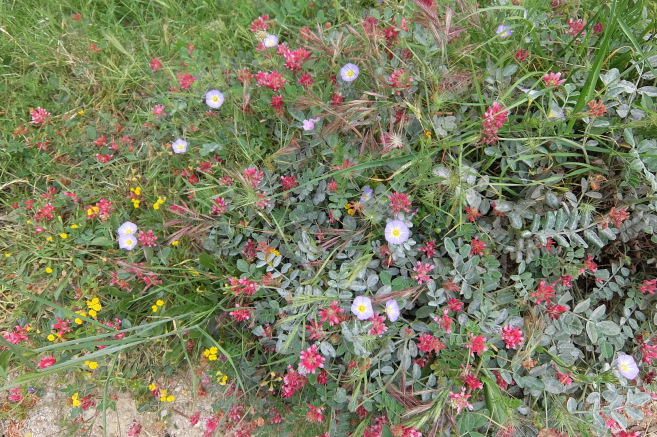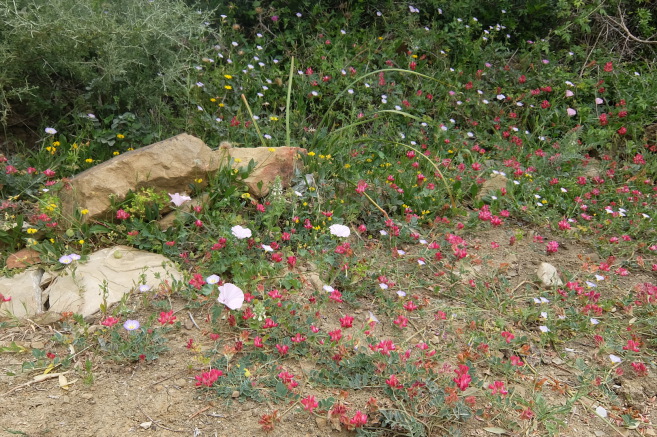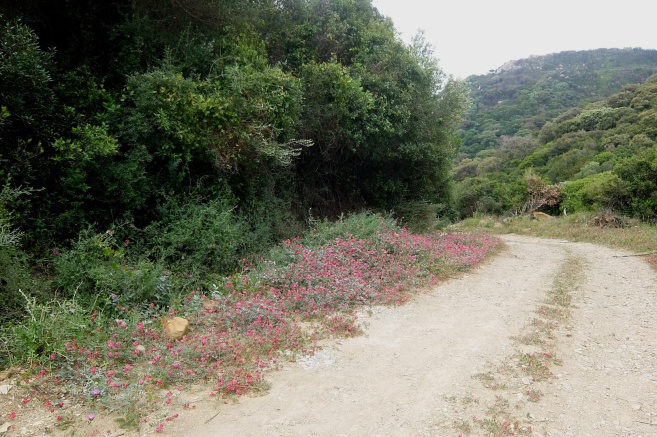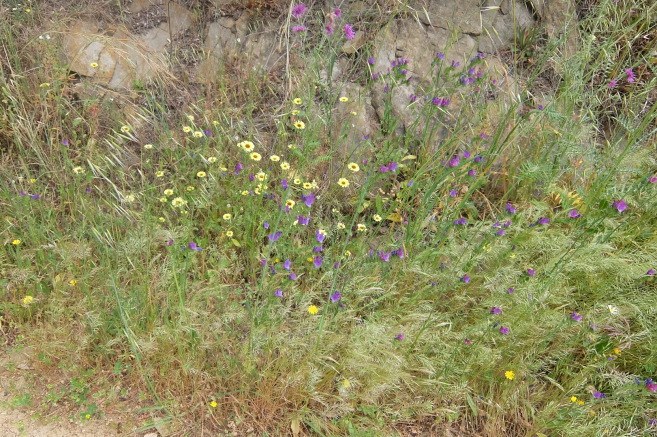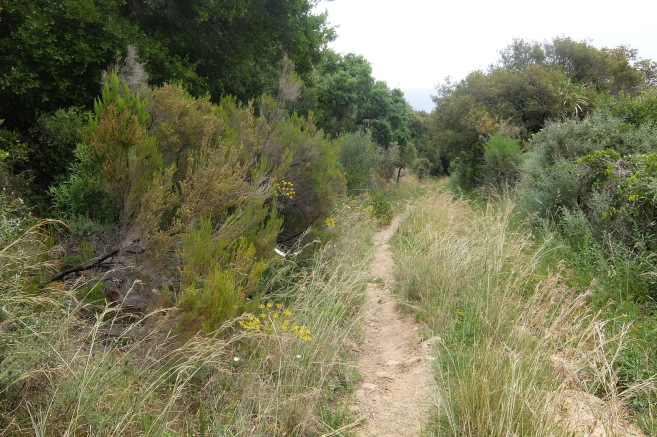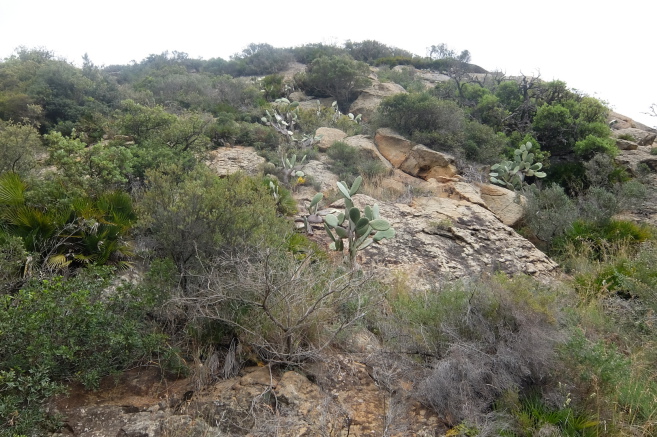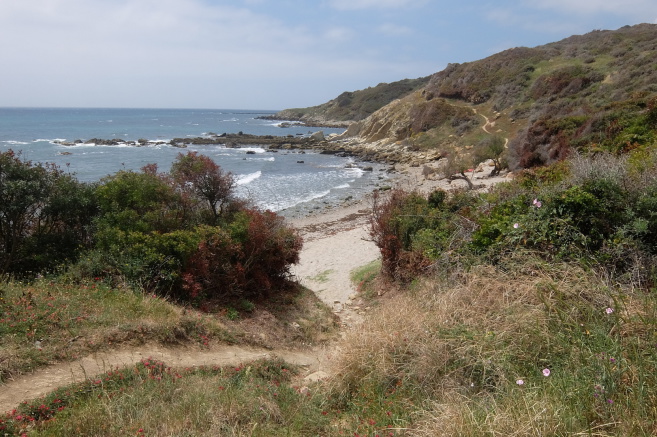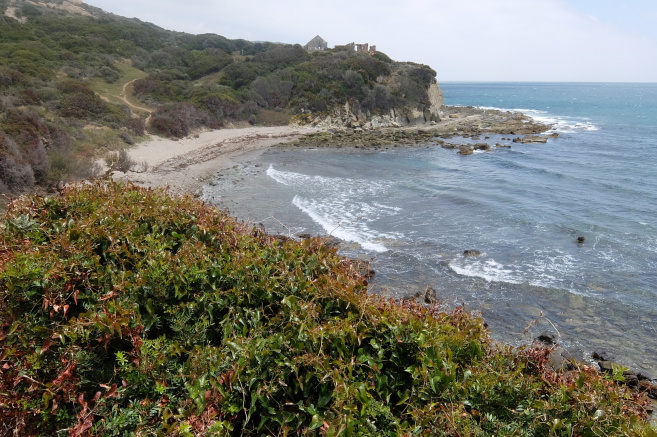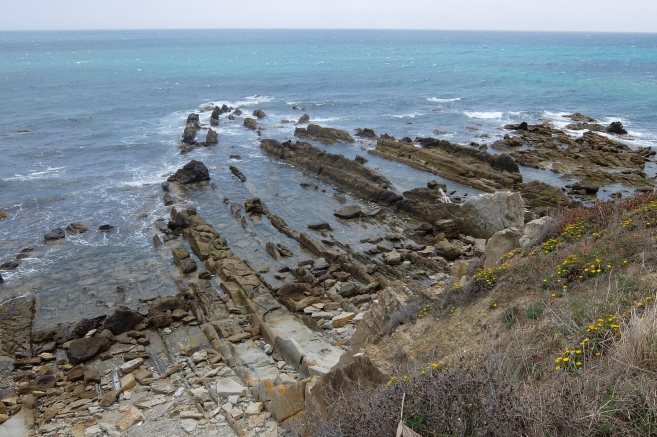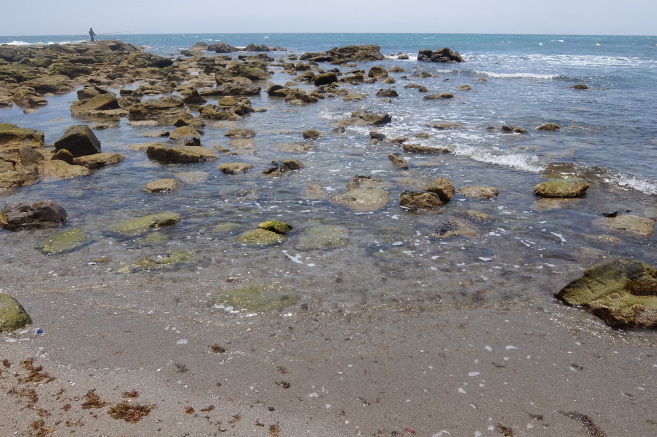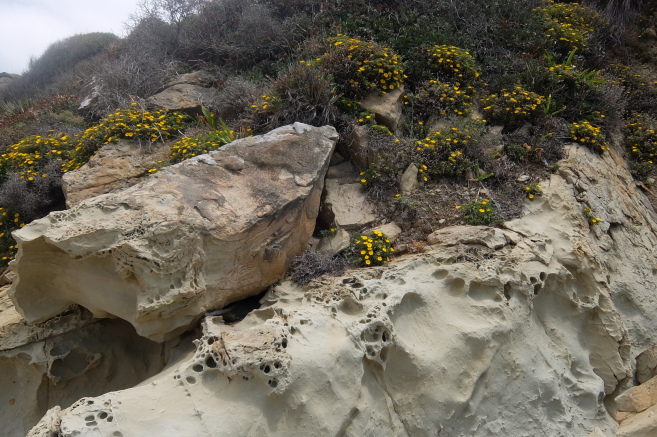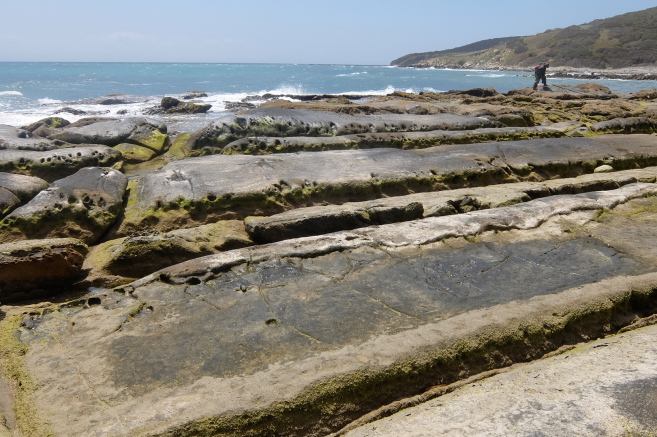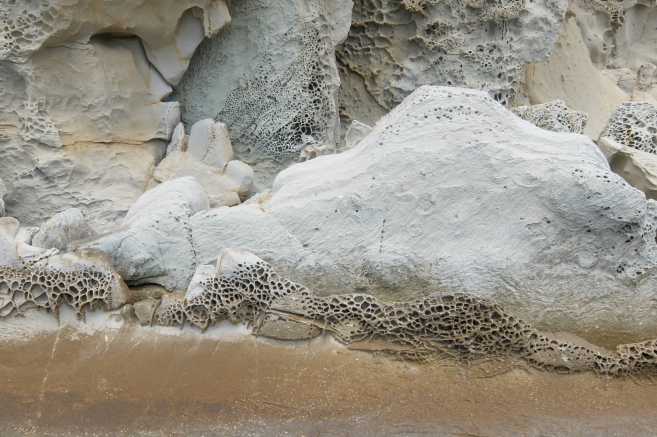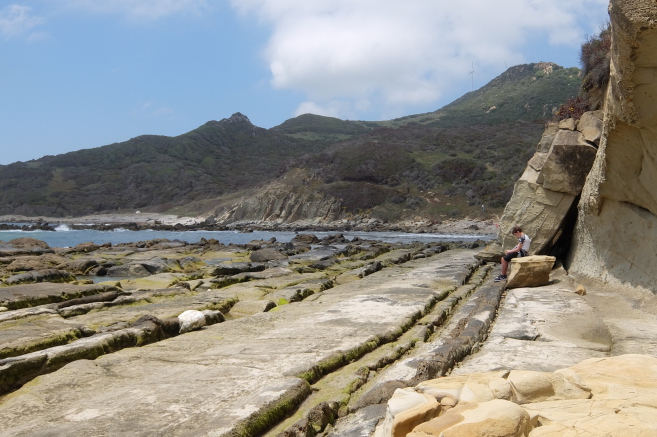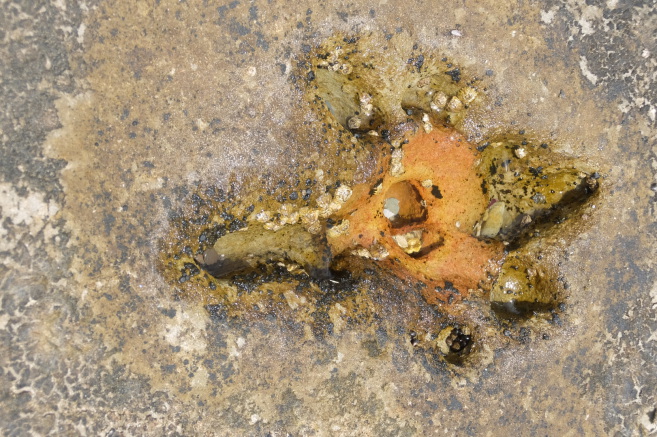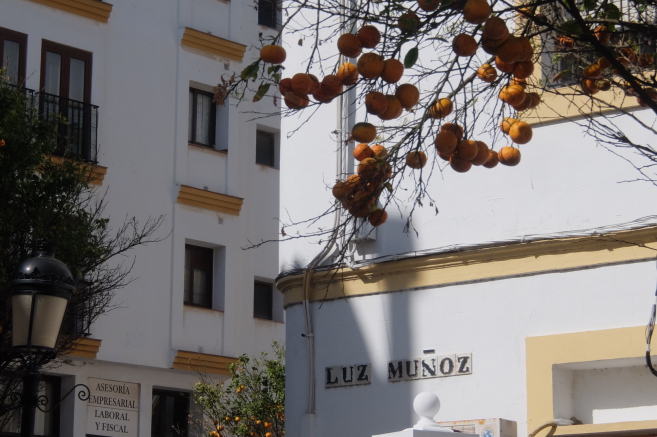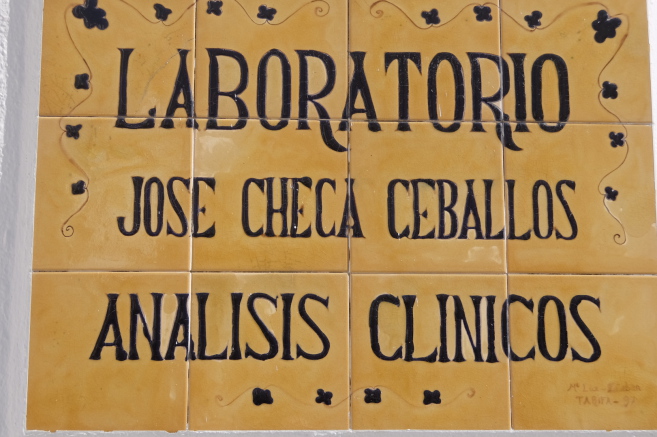Welcome to the Rudloe and environs website.
Here you will find news, articles and photos of an area that straddles the Cotswold Area of Outstanding Natural Beauty in north-west Wiltshire.
Contributions in the form of articles or photos are welcome. Even those with completely contrary views to mine!
Thanks to the website builder 1&1 and Rob Brown for the original idea.
Rudloescene now, in January 2014, has a sister, academic rather than anarchic, website about Box history here: http://www.boxpeopleandplaces.co.uk/
It contains thoroughly professional, well-researched articles about Box and its people.
Contact rudloescene through the 'Contact' page.
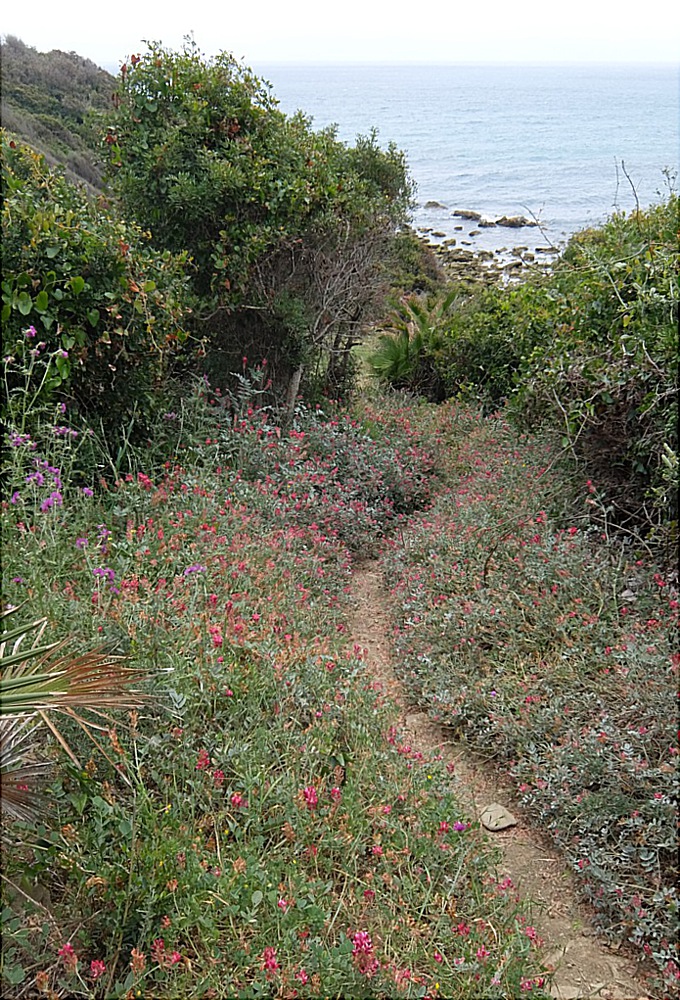
The Parque Natural del Estrecho, between Tarifa and Algeciras at the point where the Atlantic meets the Mediterranean, is the most southerly natural park in Europe. The following photographs show typical, widespread flowers and plants at the margins of the maquis (Mediterranean scrubland vegetation of shrubs or small trees) and, in images 6, 7 and 30 of the gallery, some of the many debarked oaks (Quercus suber) are shown. Cork oak is unique in its ability to regenerate its outer bark. After a tree reaches 25 years of age, it can be stripped of its cork once every 9 to 12 years without causing damage to the tree. A single cork oak, which lives up to 200 years, can be harvested over 16 times. The geology is interesting (but perhaps not for some); the photos show sedimentary limestone which has shifted 90 degrees so now lies vertical to its plane of deposition. Over time, the edges of the layers on the beach have been eroded to look like kerbstones or the time-worn streets of Pompeii. Also much in evidence is significant honeycomb weathering of the limestone. The beaches contain evidence of migrations from Africa (Morocco) which is only ten kilometers away across the Straits of Gibraltar. I have also included some images of Tarifa town which, like the Parque, is the most southerly in Europe.
And now a few images of Tarifa town ...
